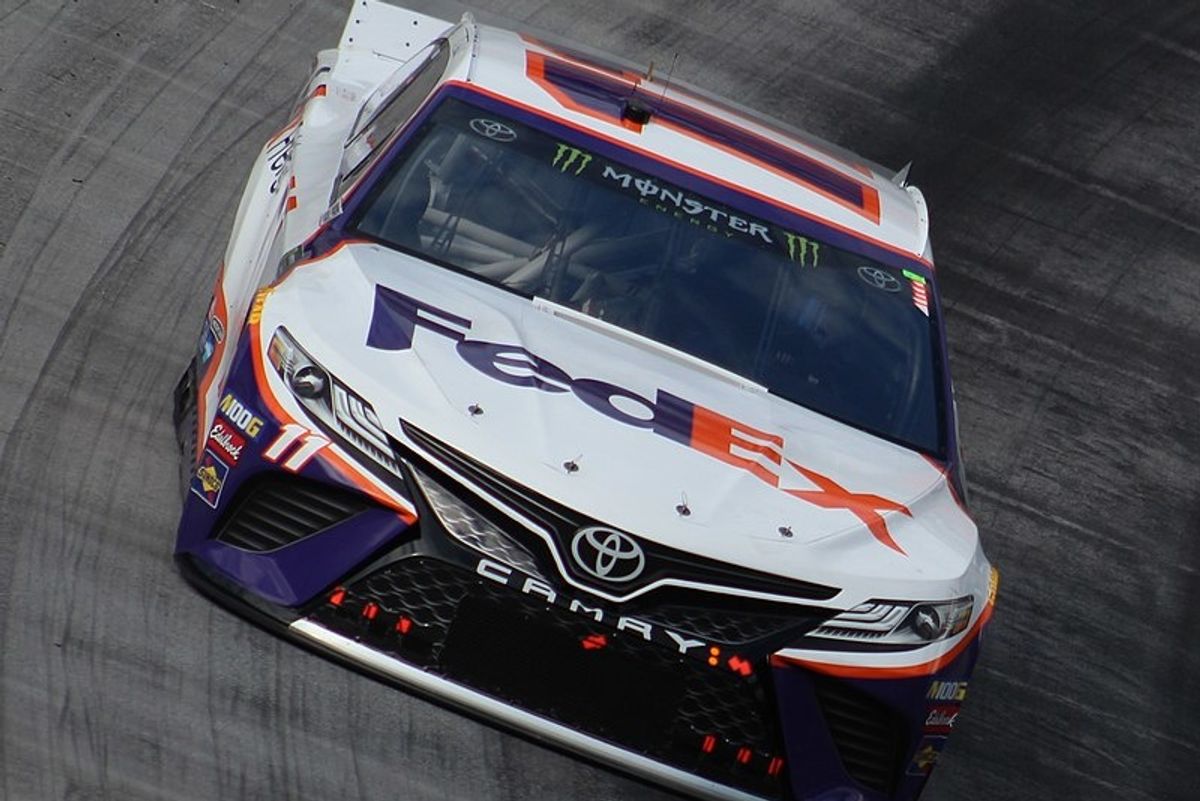
Photo via: Wiki Commons.
NASCAR heads to Thunder Valley on Sunday for the Food City 500. This will be the first short track race of the season as the guys will make a quick turnaround after running their second race at Charlotte on Thursday. This track is easily one of the most intense and high intensity type racetracks on the schedule. It's a 0.5 mile one groove race track with twenty-six degrees of banking in the corners. Its layout is similar to the nearby Nashville Fairgrounds.
This track is known for its close quarter beatin' and bangin' type racing, so there's a good chance that somewhere along the line someone will put the bumper to someone else which could cause upset drivers at the end of the race. The one thing I am looking forward to during this race is the return of the 750 horsepower package. Over the last couple of years this has provided the best finishes of the season including a fantastic battle between Denny Hamlin and Matt DiBenedetto last fall. Should Mother Nature cooperate this race will definitely be a good one.
On Wednesday when we were all ready to go racing, Mother Nature had other ideas as the race was postponed to Thursday. When the green flag flew, it appeared as if Joey Logano would be the car to beat as he went on to take the first stage of the race. But after that, he faded to fourth after Alex Bowman and Kevin Harvick took over the top two spots. They would battle it out until the late stages of the race when Bowman smacked the wall in turn four ending his chances of victory.
Later, when it seemed like Kevin Harvick was able to get away with twenty-eight to go, Chase Elliott took over the lead and never looked back as he went on to take the victory. It was finally sweet redemption for NASCAR's most popular driver. After the heartbreak of the 600 and Darlington, lady luck finally smiled upon the #9 Camaro. With the victory, Chase and his team proved that they are a force to be reckoned with all throughout the 2020 season.
While Elliott might have taken most of the spotlight, a driver that had a great result was Ricky Stenhouse Jr as he went on to finish 4th. When the teams got to Daytona, things seemed promising for the Mississippi driver as he won the pole for the 500 and seemed to be in contention, but late in the race things went haywire after crashing entering pit-road ending his chances. As the season went on the struggles continued. His average finish over the last five races would be 22nd including a disastrous lap one crash in the return race at Darlington.
Overall, while it wasn't a winning result, Ricky's #47 Krogers Camaro showed great progress as he was able to drive all the way to the top three at one point and looked to have a car to contend with Elliott and Harvick for a while. It is good to see this driver run well considering how much criticism he has received over the last couple of years. I look for him to follow up at Bristol with another good run.
The driver I think will win this weekend is Matt DiBenedetto. Now I am sure you may think I am going on a limb here but let's not forget, Dibenedetto had this race won in the fall until he collided with the lapped car of Ryan Newman. He comes to this track in a great situation and has been running extremely well this year as he finished 2nd at Las Vegas and is currently in the playoffs. As we all know, he has come from the small teams like the now defunct BK Racing. He has made the steep climb to where he is now and this week, I think he will give this historic team their 100th career victory and punch their ticket to the playoffs.
(All stats and information used in this article is brought to you by the good folks at driveraverages.com and Racing-Reference.com the best websites for all NASCAR stats)
Most Popular
SportsMap Emails
Are Awesome
Oswald Peraza hit a two-run single in the ninth inning to help the Los Angeles Angels snap a three-game losing skid by beating the Houston Astros 4-1 on Saturday night.
Peraza entered the game as a defensive replacement in the seventh inning and hit a bases-loaded fly ball to deep right field that eluded the outstretched glove of Cam Smith. It was the fourth straight hit off Astros closer Bryan Abreu (3-4), who had not allowed a run in his previous 12 appearances.
The Angels third run of the ninth inning scored when Mike Trout walked with the bases loaded.
Kyle Hendricks allowed one run while scattering seven hits over six innings. He held the Astros to 1 for 8 with runners in scoring position, the one hit coming on Jesús Sánchez’s third-inning infield single that scored Jeremy Peña.
Reid Detmers worked around a leadoff walk to keep the Astros scoreless in the seventh, and José Fermin (3-2) retired the side in order in the eighth before Kenley Jansen worked a scoreless ninth to earn his 24th save.
Houston’s Spencer Arrighetti struck out a season-high eight batters over 6 1/3 innings. The only hit he allowed was Zach Neto’s third-inning solo home run.
Yordan Alvarez had two hits for the Astros, who remained three games ahead of Seattle for first place in the AL West.
Key moment
Peraza’s two-run single to deep right field that broke a 1-1 tie in the ninth.
Key Stat
Opponents were 5 for 44 against Abreu in August before he allowed four straight hits in the ninth.
Up next
Astros RHP Hunter Brown (10-6, 2.37 ERA) faces RHP José Soriano (9-9, 3.85) when the series continues Sunday.

